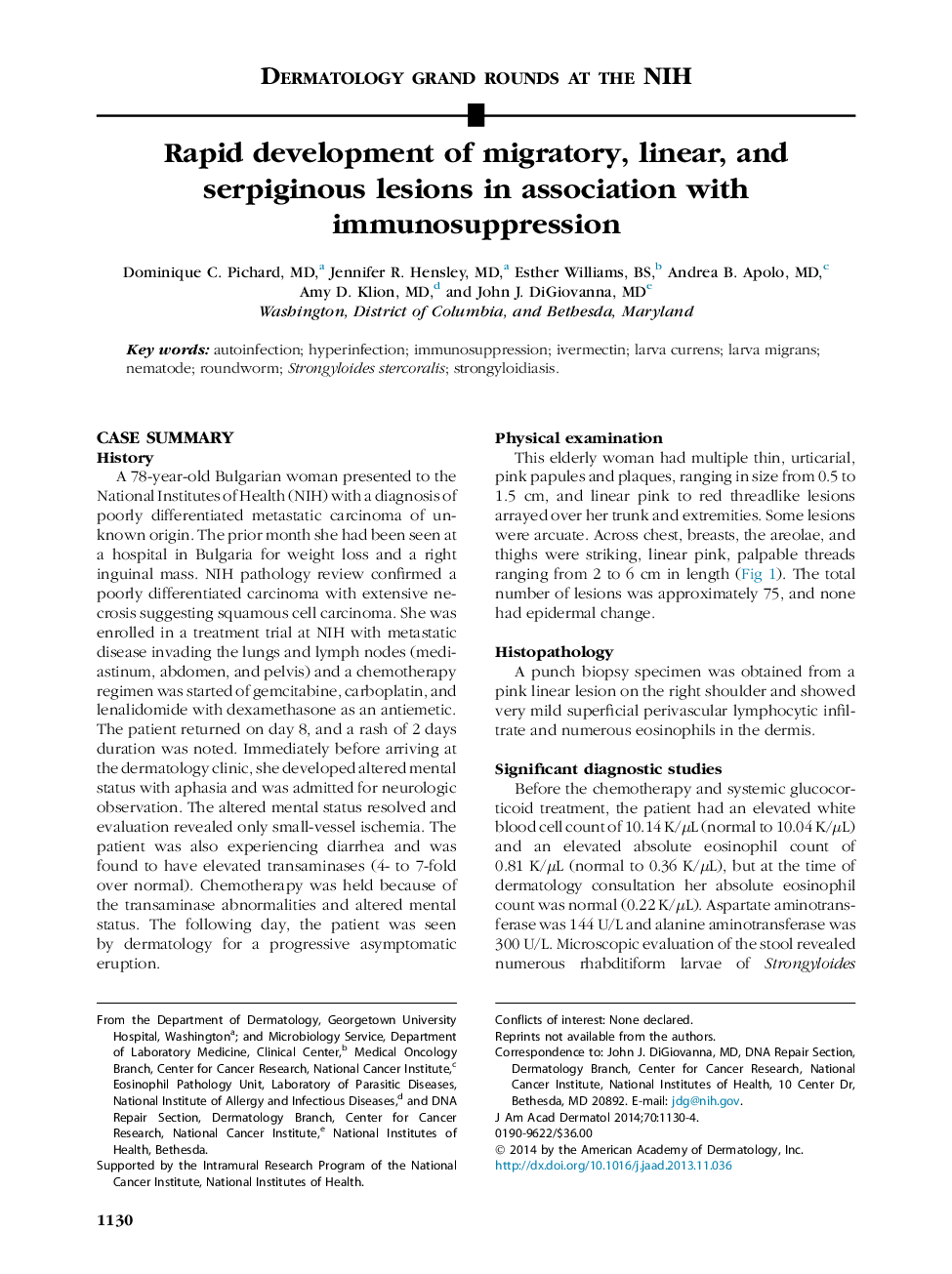| Article ID | Journal | Published Year | Pages | File Type |
|---|---|---|---|---|
| 6071885 | Journal of the American Academy of Dermatology | 2014 | 5 Pages |
Key teaching pointsâ¢Strongyloides is a genus of obligate gastrointestinal nematodes (roundworms) of vertebrates. The species stercoralis, the usual cause of human infection, has the potential for autoinfection and multiplication in human beings.â¢Peripheral eosinophilia without a known cause may represent chronic, persistent infection with Strongyloides stercoralis.â¢Undiagnosed disease is prevalent, especially among immigrants and military veterans who served in highly endemic areas in the tropics and subtropics.â¢Immunosuppression of individuals with persistent Strongyloides stercoralis infection can lead to hyperinfection syndrome or disseminated infection, which can be fatal in up to 90% of cases.â¢First-line therapy for acute and chronic strongyloidiasis is ivermectin, 200 μg/kg orally in a single daily dose for 1 to 2 days. Treatment of hyperinfection syndrome includes reduction of immunosuppression, if possible, and administration of ivermectin (200 μg/kg daily) until larvae are no longer detected in stool for at least 2 weeks.3,17 The spectrum of clinical disease is wide, however, and shorter courses of ivermectin may be sufficient.â¢Larva currens is a hypersensitivity reaction that refers to the cutaneous manifestation of Strongyloides and should be distinguished from cutaneous larva migrans, which is caused by abortive human infection with an animal hookworm.
